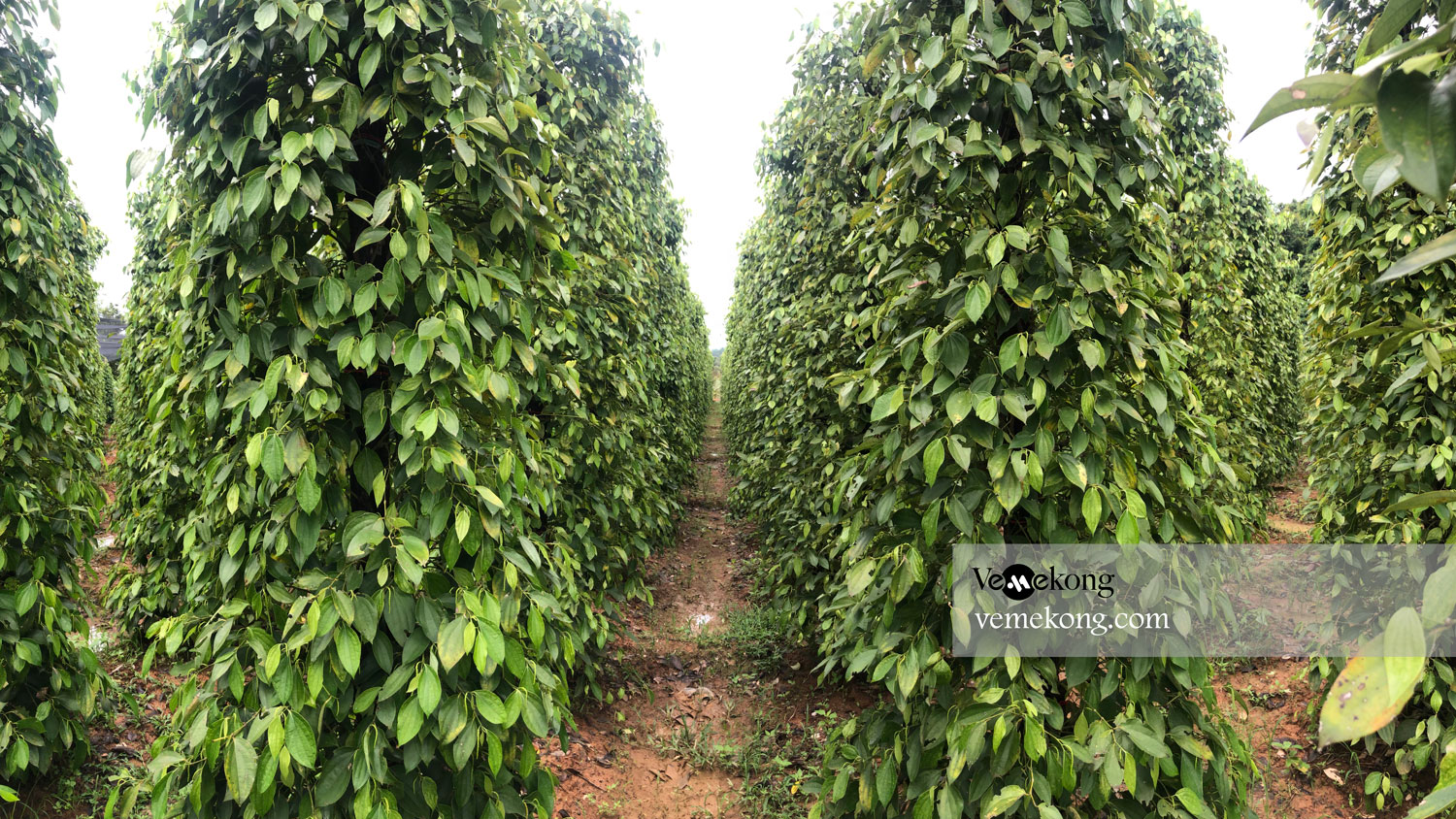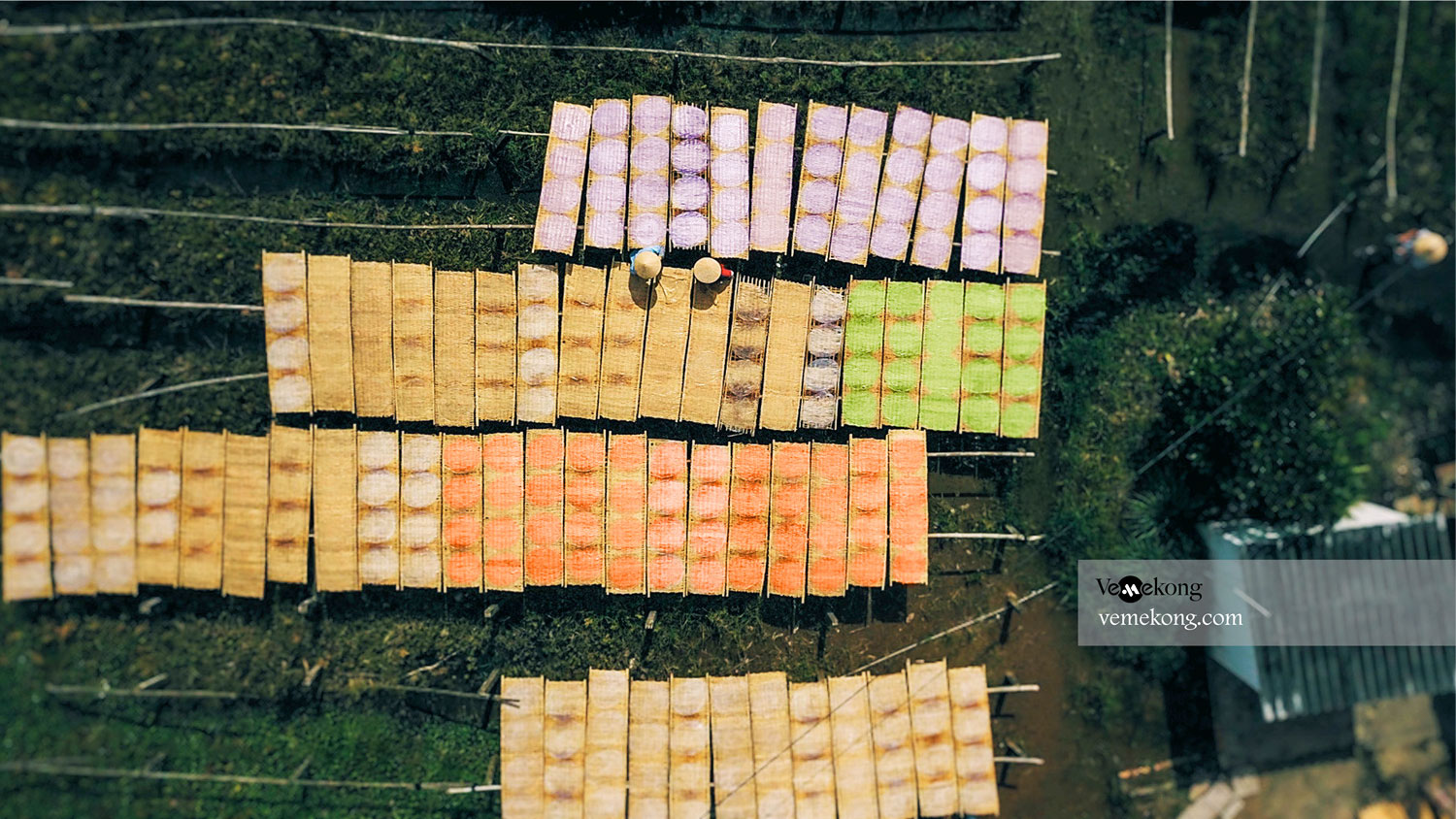Phu Quoc pearl island is not only endowed with many beautiful landscapes by nature, but also a place to grow many delicious products, especially pepper. Phu Quoc pepper is famous for its rich spicy taste, unmatched aroma, and is popular everywhere.
By Thomas Vietnam at vemekong.com | Official Phu Quoc Visitor Guide
1. Better to Know as a Food Lover
Find them: Phu Quoc Island.
Best time: Dusk-Dawn
Don’t miss: Phu Quoc pepper
Local’s pick: Phu Quoc pepper garden
Tourist’s pick: Supermarket in Phu Quoc
Blog: https://vemekong.com/phu-quoc-pepper/
Facts: Visiting the pepper garden, you have the opportunity to learn the special pepper growing method of the Phu Quoc people, and you can buy pepper to make after traveling to the pearl island. Not stopping there, Phu Quoc pepper gardens are also a “virtual living” place in the middle of a super-quality background, featuring the green color of the leaves, dotted with clusters of red pepper, helping you create check-in photos
2. Better to Know Phu Quoc pepper
Phu Quoc pepper has an aromatic, pungent taste and Phu Quoc pepper is especially stronger than many peppers from other regions, including red pepper. Pepper is harvested by the people of Phu Quoc in batches of ripeness and is mainly harvested by manual methods, selecting ripe berries separately into 3 types: black pepper, red pepper and skullcap.
Every year, Phu Quoc pepper growers often take new land around the garden to fertilize around the tree (also known as construction contractor). Venom is mainly live venom. In addition, growers use very little or no chemical fertilizers to fertilize pepper plants.
Cuttings are mainly grown from stem cuttings, so the price is very high. The average cost to plant a hectare is 300-400 million/ha, so farmers are rarely eligible to plant a large enough area once, but have to grow it slowly for many years, so a pepper garden in Phu Quoc often has different ages.
Pepper varieties grown in Phu Quoc are mainly two varieties Ha Tien and Phu Quoc (large-leaf pepper and small-leaf pepper). These two groups of varieties have almost the same harvest time from November of the lunar calendar to the end of February of the lunar calendar. The Ha Tien variety has higher yield than the Phu Quoc variety, but has less longevity and resistance to pests and diseases.
The average yield of pepper in Phu Quoc is 2000-3000kg/ha, the planting density is from 2500-300 stings/ha. Phu Quoc pepper is famous for its peel, firm seeds, spicy and strong aroma that cannot be matched anywhere else. Phu Quoc people preserve pepper farming not only for economic purposes but also for great cultural and tourism value. Pepper is a local specialty and a unique gift for tourists near and far. Pepper gardens are always included in the list of destinations in Phu Quoc tours.
3. Phu Quoc pepper in Kien Giang
Phu Quoc people harvest pepper mainly by manual method. December and January of the lunar calendar every year is the time when people start harvesting pepper. Round, stretchy peppers are old seeds and can be harvested. In order to get good and aromatic pepper, people have to dry the pepper for at least ten days, and then sift it to clean the dust.
Phu Quoc pepper is harvested and classified into 3 main groups: red pepper, skull pepper and black pepper.
Red pepper, also known as pink pepper, is the best quality pepper that is processed and selected from ripe red, large, round peppers that are dried with the shell.
Skull pepper, also known as white pepper, are ripe yellow peppers that are collected by gardeners and then scrubbed to get the seeds inside (skull). Skull pepper is mainly spicy, not as delicious as Hong pepper because the outer shell has been removed. Phu Quoc fish sauce
Black pepper is the green pepper that has been harvested and dried under the sun at high temperature, when it is sunny enough, the peppers hunt and turn black, so it is called black pepper.
4. How to Make Phu Quoc pepper
Black pepper processing
Harvest when the pepper is 5-10% ripe on a bunch. The pepper is separated from the beam, through the machine. People dry pepper fruit for 3-4 days in cement yards or PP tarpaulin. When the pepper turns from green to black and reaches 11-12% of water content; impurities are separated, bagged, consumed (or stored). Pepper can be stored for 1-2 years. Currently, black pepper accounts for 85-90% of the country’s pepper production. The weight of commercial black pepper after processing is about 1/3 green pepper (100kg of fresh pepper is about 30-35kg of black pepper).
5. Pro tips:
Here are our tips for easing your mind (and stomach) around food-handling environments that you may not be used to.
Make sure the food is freshly cooked. If you’re eating hot street food, it’s always safest (not to mention more delicious) to eat food you can see being cooked to order.
Look for lines and busy stalls. Busy street food stalls are an indicator of popularity, and their high turnover rate means the food is never sitting out for hours and developing dreaded bacteria. Yes, long lines can be discouraging when you’re hungry after a full day of exploring, but it’s not worth the risk of grabbing precooked food from the empty spot next door.
Eat when the locals are eating. The last and most important element here is when to eat. You’re likely already on a weird eating schedule while you’re traveling, but it’s important to try and adjust to the eating times of where you are. A bowl of pho might be lunch for Americans, but it’s breakfast for the Vietnamese. This ensures that you’re eating freshly cooked food and that you can find the best and most popular places to eat.
If you can’t drink the water, then you can’t eat the salad. Most people get so hung up on not drinking the water or skipping ice in drinks that they don’t think about all of the other ways in which water is used in food service. Fruits and vegetables tend to be washed with tap water in most places, rather than the filtered water that locals drink—or sometimes it’s not washed at all. If you’re really craving some produce, try fruits you can peel or cooked veggies.
Trust your gut. If you’re unsure about the food or the way that it’s being prepared, then keep moving. Eating street food all over the world doesn’t make you an expert. Every stall and every country are different, and sometimes the rules can be harder to follow. When something doesn’t look, smell, or feel right, don’t eat it! Trust your judgment. Chances are that there’s another spot close by that’s making something more delicious.
Must-Eat Foods & Restaurants in Can Tho: Co Ut’s Cong cake, Ut Dzach Fine Rice Vermicelli, Thanh Van Grilled Pork Sausage, Crab Noodle Soup At Floating Market, Scorched Rice with Caramelized Fish Sauce, 7-Toi’s Duck Meat Pancake, Banh Mi Thuy, Banana Blossom Salad, Fried Spring Rolls, Fresh Spring Rolls, Fetal duck egg (balut), Honeycomb Cake, Mini Sticky Rice Cake, Cassava Silkworm Cake, Grilled Banana Wrapped in Sticky Rice, Khmer-style Bun Goi Da Soup, Egg Coffee, Con Son Grilled Snakehead Fish, Bun Mam – Fermented Fish Noodle Soup, Lau Mam – Fermented Fish Hotpot, Grilled Snails with Pepper, Magenta Sticky Rice Cake, Duck cooked with Fermented Tofu, Rice Noodle Pizza, Vegetarian Noodle Soup, Snails Stuffed With Pork…
Must-Eat Foods & Restaurants in Chau Doc: Chau Doc Fish Noodle Soup, Sugar Palm Fruit, Basa Fish Hot Pot, Mam (Fermented fish), Phu Huong Beef Noodle Soup, Broken Rice with Pork Chop, Long Xuyen Broken Rice, Nui Cam Pancake, O Thum’s Chicken Grilled with Lime Leaves, Stir-fried Shrimp with Sesbania Flower, Sweet & Sour Soup with Siamese Mud Carp Soup & Sesbania Flower, Caramelized & Braised Catfish, Grilled Rice-field Rat with Salt and Chili…
Must-Eat Foods & Restaurants in Soc Trang: Pia Cake, Cong Cake (Banh Cong), Bun Nuoc Leo Soc Trang’s Noodle Soup, Soc Trang’s Bun Goi Da Soup, Duck Noodle Soup with black Pepper, Curry Noodle Soup, Grilled Beef on Tile, Khmer-style Tube Cake, Khmer-style Mung Bean Cake (Banh In), Dried Radish (Xa Bau), Stir-Fried Noodles with Seafood (Mi Sua), Soc Trang’s Green Rice Flakes…
Must-Eat Foods & Restaurants in Ben Tre: Phu Le Rice Wine, Ben Tre’s Coconut Candy, Flat Banana, Coconut Rice, Snail Pancake, Sea Snail with Coconut Milk, Coconut Worm, Young Coconut Salad with Shrimp & Pork, Son Doc Puff Rice Paper…
Must-Eat Foods & Restaurants in Cai Be: Puffed Rice Cake…
Must-Eat Foods & Restaurants in Vinh Long: Elephant Ear Fish (fried giant gourami)…
Must-Eat Foods & Restaurants in My Tho: Fried Sticky Rice, Snakehead Fish Rice Porridge, Hu Tieu My Tho (Noodle Soup), Coconut Banana Cake…
Must-Eat Foods & Restaurants in Tra Vinh: Macapuno Coconut, Bun Nuoc Leo Tra Vinh’s Noodle Soup, Tra Cuon’s Sticky Rice Cake…
Must-Eat Foods & Restaurants in Sadec: Sa Dec Noodle Soup, Sadec Crab Hotpot, Lai Vung Spring Rolls, Sa Giang Shrimp Puff Pastry, Lai Vung Tangerine…
Must-Eat Foods & Restaurants in Bac Lieu: Spicy Beef Noodle Soup, Bac Lieu’s Three-striped Crab, White Radish Pies, Bac Lieu Thick Noodles & Creamy Coconut Milk, Bon Bon Pickles…
Must-Eat Foods & Restaurants in Ca Mau: Banh tam ga cay (Silkworm rice cake with curried chicken), Grilled Vop clams with salt and pepper, Grilled Mudskipper Fish, Stone Crab Roast With Salt, Young Bee Salad, Nam Can’s Crab, U Minh Forest’s Honey, U Minh’s Fermented Fish Hotpot…
Must-Eat Foods & Restaurants in Hau Giang: Cau Duc Pineapple, Cai Tac’s Pork Organs Porridge, Hau Giang’s Bronze Featherback Fish Cake…
Must-Eat Foods & Restaurants in Ha Tien: Herring Fish Salad, Spider crab cake soup, Ken Noodle soup, Xoi Xiem (Siamese sticky rice), Steamed Noodle soup, Ha Tien Oyster porridge…
Must-Eat Foods & Restaurants in Rach Gia: Stir Noodle Soup, Kien Giang Fish Noodle Soup…
Must-Eat Foods & Restaurants in Con Dao: Bang nut jam, Vu Nang Snail, Roasted Pork Bread (Banh Mi), Coconut Ice Cream…
Must-Eat Foods & Restaurants in Phu Quoc: Phu Quoc Sim Wine, Phu Quoc Pepper, Phu Quoc fish sauce…
Hopefully, the above tips will help you to come up with a great plan for your adventure in Mekong River Delta, Vietnam. Have a safe trip!
“Sleep less, travel more, respect more” – Thomas Vietnam – Local travel expert.
Thank you

